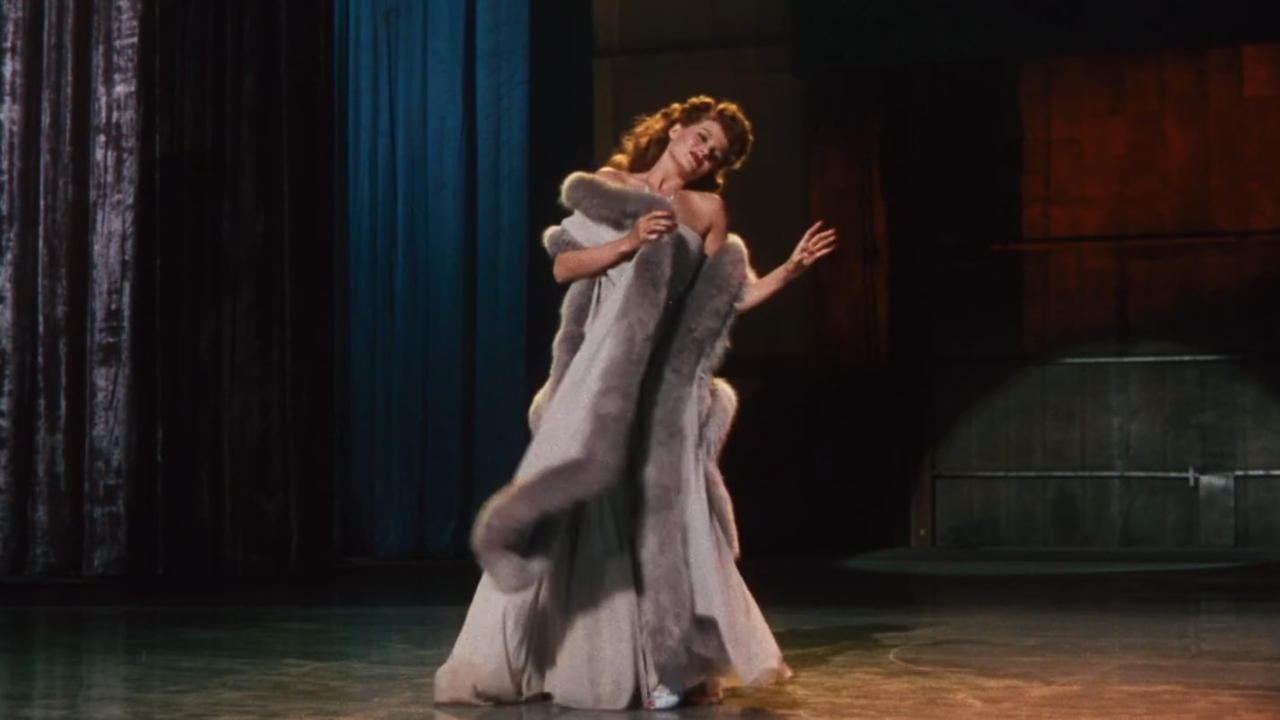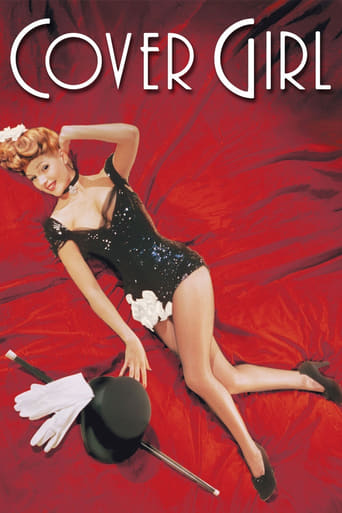



I like the storyline of this show,it attract me so much
View MoreI gave it a 7.5 out of 10
Close shines in drama with strong language, adult themes.
View MoreThere is, somehow, an interesting story here, as well as some good acting. There are also some good scenes
View MoreI have seen this movie a few times always with pleasure.Rita Haworth & Gene Kelly were always entertaining. Also talking about gorgeous Rita has kindled a memory about my 3rd cousin Constance Worth (not her real name)who also appeared with Rita Haworth in the movie Angels Over Broadway. She was born in Sydney Enid Joyce Howarth known in Australia as Joycelyn Howarth the youngest of 3 daughters & her mother Mary Ellen Dumbrell married a Banker named Moffatt Howarth. This girl was the first Australian actress to find stardom in Hollywood.Our family is proud to be related.
View MoreThis is really worth it for Rita Hayworth and Gene Kelly, and different reasons for each. I enjoy these splashy films from old Hollywood in part because by now we can glean enough about the various circumstances surrounding that stage where everything was shown to be dreamy, enough to recognize tatters of private darkness planted or inadvertently mirrored in the actual films that challenge the polished image. We can supply extra depth that was kept from the public at the time. Extra beauty mixed with pain that is about the effort to stage beauty.So Rita is the radiant face center stage, performing for the dreams of two men, now and once in the past. Her story is another in a long line of Hollywood intrigue and covert allure with dark spots and well kept secrets. We know how she was groomed by the studio into the image that we came to know and love, how she was deeply troubled in a number of ways, most notably alcohol and men, how she was never allowed to sing and which embarrassed her in public. There is all of that funneled in this one here from a tumultuous life in the big stage of movies. She sparkles, but with a hint of precious fragility.The day the wedding scene for the film was shot, she eloped with Orson Welles. And she was the first female lead to dance with both Astaire and Kelly, accomplished here.And there is Gene, on and off that stage, fighting to stage a show around her that is about the feet and not just the beautiful face. He was on loan from MGM to Columbia for this and granted full creative control to stage the show that we see, the experience from this would go on to pay dividends for MGM at the time of Singin' in the Rain.His character's show inside the film is barely okay, a lot of tap crowded in a small venue. But it's what he choreographs outside that has magic; the cover-girl show where the giant lens of a camera descends on stage and colorful dreams of women unfold inside the eye, our eye, framed as magazine covers; the number with the three of them out on the street done in a sweeping take that we would see again in Singin'; Rita's grand Broadway show in that titanic stage receeding far in the back; the Alter-Ego number above all, a brilliant thing where he's called to out-dance his own reflection.It's marvellous stuff on the whole about a dance that can engage a dream to reveal the true beat of the heart. Turns out that the dream was not fame or money, not the image on the cover, but love for this girl.
View MoreSinger/dancer "Rusty" Park (Rita Hayworth) performs at Danny McGuires and is romanced by the owner--Danny (Gene Kelly). She is spotted by a magazine agency and they hire her to become their new cover girl. She becomes an overnight sensation and is happy...but all this fame threatens her romance with Danny.The story is sappy but you don't watch this for the plot! You watch to see Hayworth, Kelly and a young Phil Silvers singing and dancing and there's a LOT of that. The numbers are in bright beautiful Technicolor, Hayworth is incredibly beautiful and the dancing is astonishing. We also have Eve Arden in a small role providing some comic relief. This also has some pleasant if forgettable songs except for the haunting "Long Ago and Far Away" (Oscar-nominated). Also there's the "Alter Ego" dance where Kelly dances with himself! However this isn't perfect. The totally predictable story drags this down a little, it's a bit too long and a little of Silvers comedy goes a long way but it's still well worth watching.Just be careful if you see it on commercial TV. I saw it originally back in the early 1970s on TV...and it was in b&w!
View MoreCover Girl (1944)The war is on, and this musical covered two fronts--escapist entertainment, and good old leggy girls for the guys in uniform (those who got to see it). Betty Grable may have been the unofficial pin up actress in wartime, but Rita Hayworth was one of the real hotties of the 1940s, and another G.I. staple, and she is the visible star of this very colorful musical.The other star, secondary except in name, is Gene Kelly, who is actually a relief in his scenes, adding some stability to a sometimes frivolous and girly musical. Hayworth is great as a presence, too, for sure, and she does do her own dancing, but her singing voice is dubbed by another vocalist. Third in importance is Eve Arden (for me) playing her usual world-weary wit, in this case in the center of the cover girl search. An interesting if minor trick to the plot early on is the way they create two plots in two time periods, the present (1944) and forty years earlier. So the musical numbers (and lavish costumes) vary from one period to the other, with Hayworth providing the link. Most of the time, thought, it's the early 1940s with the usual competing romances, and a striving for glory takes off. This was Hayworth's biggest success to date, and she was married to Orson Welles at the time. The movie was a hit, both with audiences and with critics. It even won an Oscar (for the music).How does it compare to other musicals? Well, for one thing it has totally vivid color, I mean vivid, true three-strip Technicolor (the ultimate), and it helps. The dance numbers are on obvious sets, carefully and beautifully designed. Kelly was instrumental in making the dance numbers work, even dominating the director (Charles Vidor) on this score. You might even see hints of his later more famous musicals (a street scene has echoes of "Singing in the Rain" in set design, without the rain--a cop even ends the scene in both cases). The dancing is something of an evolution from the 1930s Astaire-Rogers dancing which was heavily tap and ballroom kinds of couple numbers. Here we see more choreographed integration with the plot and the scenes. The story, as the title suggests, has a great theme. Rita's character, Rusty Parker (she has reddish hair, which is common in these Technicolor affairs) is trying to be a cover girl for a magazine contest. Of course, so is everyone else in the country. And they bring it to an amazing climax by presenting "covers" designed for all the major magazines, the real thing from Cosmopolitan to Look. The actual magazines around the country got on board with the movie while it was being made and had their own contests for their covers. One dance number features each of the winning covers, seen through a giant camera lens, and each of the winning girls--so the cover models got a small dose of Hollywood stardom, too. It's fun, and clever, and it sold the film big time.There is an odd mistake in the movie--when the original Variety cover with Rusty Parker on it is pinned up by her dance friends and rivals, it shows a picture of her looking at the camera. When the camera pulls back for a wider view, it shows a different cover! Parker is looking to one side. Pretty ridiculous boo-boo.I can't over emphasize how much the production values of the film support it. The color, the photography, the set design, and the editing are all really fabulous. There are two photographers listed, and one is Rudolph Mate who has a number of great Hollywood films to his name (as well as a true legend, the German/Danish "Vampyr" from 1932). Technicolor consultant Natalie Kalmus is in top form (she insisted on certain colors and color pairings that worked best with the film stock). Kelly was loaned from MGM (to Columbia) for the movie, and he was given liberties in production, making his career jump two notches. The choreography is his, and MGM began to pay attention to him at this point. The great number where he plays against his ghost on the streets is inventive and fun. The production is high here, with true Technicolor, but it lacks the high standards of MGM (see "Singin' in the Rain" for some better echoes). There are lots Broadway based visuals, with sets and contrivances. It only goes so far, and it's so infected by the "cover girl" mentality it drives any normal person not to boredom but to disappointment. I know if I say it's sexist many people think I'm just not getting it, or I'm applying a 21st Century filter to a normal situation back then. But it's an objectifying movie with all the worst stereotyping clichés you can write into a script. And the fact remains that neither Kelly nor Hayworth are what you would call great actors. Likable (and pretty) but limited in their range. It's a musical, yes, and it gets around to real music eventually, and it's no less than Kern and Gershwin. The great song is a quiet number between them, Long Ago and Far Away. Some of the other songs are formula stuff, and you have to hang in there. In fact, you start to realize you are being patient a lot, waiting for the movie to rise up.
View More